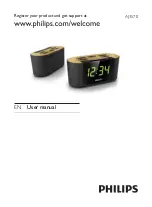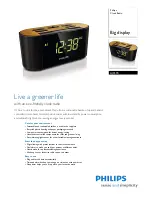
READ THIS INSTRUCTION SHEET THOROUGHLY
BEFORE INSTALLING AND OPERATING YOUR
MERIDIAN SMOKE DETECTOR
Introduction
The DSC Meridian wireless photoelectric smoke detector
incorporates many advanced design and technical
features to provide years of reliable operation. It is
important to follow the installation and operation
instructions on this sheet to ensure that the unit will
function properly — any smoke detector will be rendered
useless if it is not properly connected or located.
It is very important that you understand how to test and
maintain your system. Read the
Instruction or User
Manual for your alarm system to familiarize yourself with
the fire alarm functions. Be sure to test your system
regularly by following the test procedures described in
your manual. If you should ever have problems operating
or testing your system, and especially if there are
problems with the fire alarm functions, then contact your
smoke detector installer or dealer immediately for
service.
While smoke detectors and alarm systems are designed to
warn you of potentially dangerous situations, no system can
prevent emergencies. An alarm system is not a substitute for
life and property insurance; you should always maintain
appropriate insurance coverage.
How the Smoke Detector Works
As shown in the illustration, a light source is directed
across the smoke chamber and is not normally reflected
into the sensing element. When smoke enters the
chamber, the light beam is scattered by the smoke and
reflected into the sensor. When enough light is detected
by the sensor, an alarm is activated. On alarm, the
sounder is activated and the red LED will flash.
When
the smoke clears from the smoke chamber, the unit
will automatically reset itself.
WLS906-433 EU
Wireless Smoke Detector
For Residential Use
INSTRUCTIONS FOR
INSTALLATION AND USE
Alarm Indications
Condition
Sounder
Indicator
RF
Light
Transmission
No smoke
Silent
Flash every
Supervision
40-50 s
transmission
every
12 minutes
Smoke
Alarm
Flash every
Alarm
0.67 s
transmission
Automatic self-test
Silent
Flash every
Supervision
functioning normally
40-50 s
transmission
every
12 minutes
Automatic self-test Chirp between
Flash every
Fire Trouble
insufficient sensitivity LED flashes
40-50 s
transmission
Push-button test
Alarm
Flash every
Supervision
functioning normally
0.67 s
transmission
every
12 minutes
Push-button test
Silent
Flash every
Fire Trouble
insufficient sensitivity
40-50 s
transmission
Magnet/reed switch
Alarm
Flash every
Alarm
test functioning normally
0.67 s
transmission
Magnet/reed switch
Silent
Flash every
Fire Trouble
test insufficient
40-50 s
transmission
sensitivity
Low battery
Chirp simultaneous Flash every
Fire Trouble
with LED flash
40-50 s
transmission
Limitations of Smoke Detectors
While the Meridian smoke detector has been designed
for reliability, it is important to know that all smoke
detectors have limitations.
• Smoke detectors will not work without power. If the
batteries are low, the smoke detector will not function.
See ‘Battery Installation’ below for important
information on battery use.
• Smoke detectors can only generate an alarm when
smoke enters the smoke chamber; anything that
prevents smoke from entering the smoke chamber
may prevent or delay an alarm. Refer to the ‘Guidelines
for Locating Smoke Detectors’ on this
Instruction Sheet.
It is important that smoke detectors be located on every
floor of the premises, preferably in every room. It is also
important to avoid obstructions, such as closed doors
that may prevent smoke from reaching the unit. A
smoke detector will not detect a fire in the walls, in the
chimney or on the roof of a building. It will only detect
smoke when it enters the smoke chamber.
• Smoke detectors have certain obvious limitations:
they may not provide protection for someone smoking
in bed, for children playing with matches, or for
sudden and violent explosions. A smoke detector is a
single part of overall fire safety precautions; the smoke
detector should never be seen as a substitute for a
complete fire safety program.
Mounting the Unit
Locate the smoke detector mounting plate on the wall or
ceiling and mark all desired screw locations*. Use the
supplied wall anchors for all screw locations. When the
anchors have been placed, secure the mounting plate
to the ceiling or wall.
To place the smoke detector on its mounting plate, align
the mounting plate's locking tab with the lock recess on
the case and turn the unit clockwise until it is firmly
secured. Insert the screw provided to secure the head
and mounting plate.
*Note: Select a smooth flat surface. If the mounting
surface is uneven, the unit may generate a tamper fault.
Dust Cover
The dust cover is intended to protect the unit from dust
and dirt entry, while the unit is not in service.
CAUTION: The smoke detector will not function with
the dust cover in place.
Installer’s Maintenance Instructions
Normally, the Meridian smoke detector will not require
maintenance. If the unit is mounted in a dusty environment,
the inlet areas of the case should be wiped gently with a
soft, dry cloth.
Be sure to inform the user and their monitoring station when
maintenance of any sort is performed on the smoke
detector or any part of the alarm control system. Always
test smoke detectors after maintenance. If a smoke detector
continues to generate nuisance alarms even after
maintenance, return the unit to your vendor for service.
Installer’s Responsibility to the User
It is the installer’s responsibility to thoroughly instruct
the user on the operation, testing, and maintenance of
their system. The installer should fully explain and
demonstrate all functions of the alarm control system
and any equipment, such as smoke detectors connected
to it. The user should be provided with all instruction
sheets and manuals for their system and any components
connected to it. Complete and thorough instruction for
the user is essential to ensure they will obtain the
greatest benefit from their system. Providing the user
with complete operational information will also benefit
the installer through a reduction in service calls for
nuisance alarms.
Limited Warranty
Digital Security Controls Ltd. warrants that for a period of twelve months from the date of
purchase, the product shall be free of defects in materials and workmanship under normal use
and that in fulfilment of any breach of such warranty, Digital Security Controls Ltd. shall, at
its option, repair or replace the defective equipment upon return of the equipment to its repair
depot. This warranty applies only to defects in parts and workmanship and not to damage
incurred in shipping or handling, or damage due to causes beyond the control of Digital
Security Controls Ltd. such as lightning, excessive voltage, mechanical shock, water damage,
or damage arising out of abuse, alteration or improper application of the equipment.
The foregoing warranty shall apply only to the original buyer, and is and shall be in lieu of any
and all other warranties, whether expressed or implied and of all other obligations or liabilities
on the part of Digital Security Controls Ltd. Digital Security Controls Ltd. neither assumes,
nor authorizes any other person purporting to act on its behalf to modify or to change this
warranty, nor to assume for it any other warranty or liability concerning this product.
In no event shall Digital Security Controls Ltd. be liable for any direct, indirect or consequential
damages, loss of anticipated profits, loss of time or any other losses incurred by the buyer in
connection with the purchase, installation or operation or failure of this product.
Smoke detectors that are a part of this system may not properly alert occupants of a fire for
a number of reasons, some of which follow. The smoke detectors may have been improperly
installed or positioned. Smoke may not be able to reach the smoke detectors, such as when
the fire is in a chimney, walls or roofs, or on the other side of closed doors. Smoke detectors
may not detect smoke from fires on another level of the residence or building.
Every fire is different in the amount of smoke produced and the rate of burning. Smoke
detectors cannot sense all types of fires equally well. Smoke detectors may not provide
timely warning of fires caused by carelessness or safety hazards such as smoking in bed,
violent explosions, escaping gas, improper storage of flammable materials, overloaded
electrical circuits, children playing with matches or arson.
Even if the smoke detector operates as intended, there may be circumstances when there
is insufficient warning to allow all occupants to escape in time to avoid injury or death.
Warning: Digital Security Controls Ltd. recommends that the entire system be completely tested
on a regular basis. However, despite frequent testing, and due to, but not limited to, criminal
tampering or electrical disruption, it is possible for this product to fail to perform as expected.
Important Information: Changes or modifications not expressly approved by Digital
Security Controls Ltd. could void the users authority to operate this equipment.
© 2001 Digital Security Controls Ltd., Toronto, Canada
www.dsc.com •
Printed in Canada 29005729 R003
EN54-7
Compliant




















